Can the filter kill my fish? Yes, sometimes. Although it is intended to improve water quality and provide a healthier environment for your fish, it can kill your fish in several ways. If not properly maintained or kept with an inappropriate size filter.
You need to be careful while deciding on the right filter and constantly maintaining it.
The filter is necessary equipment for any aquarium as it provides many benefits for the fish and the water quality. However, some beginner fishkeepers might be concerned that the filter might kill their fish.
This article will tell you everything you need to know about filters and how to avoid any mishaps.
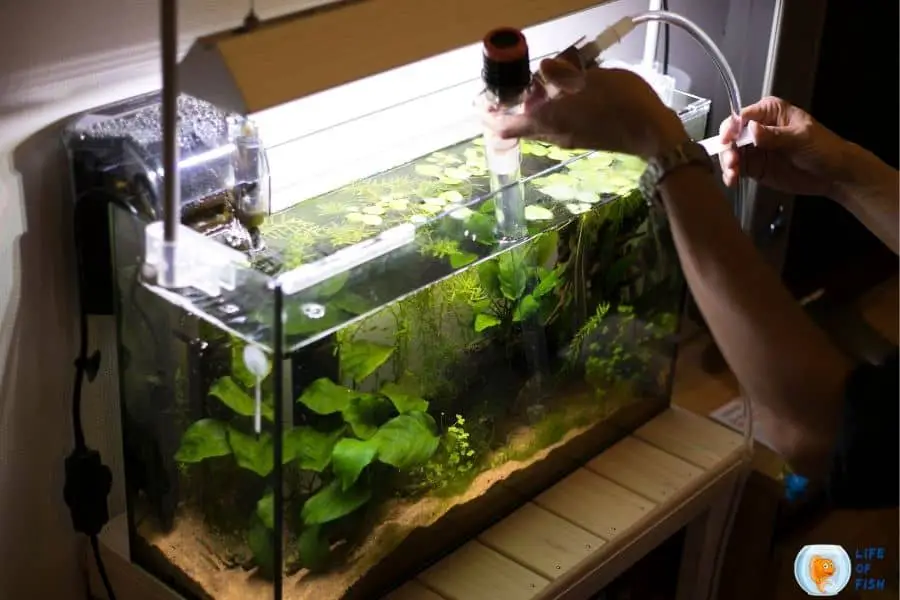
The importance of fish tank filters
Jump To
- 1 The importance of fish tank filters
- 2 What are the different types of filters?
- 3 The most common types of filters are:
- 4 What are the different types of filter media?
- 5 Can a fish tank filter kill fish?
- 6 The filter is too strong for your fish
- 7 How can I reduce the fish tank filter power and fix this issue?
- 8 The filter is too small for the tank
- 9 Can you use two filters in a fish tank?
- 10 Things to consider while using redundant filtration
- 11 Plants as natural filters
- 12 Malfunctioned filter
- 13 How to stop fish from swimming into the filter?
- 14 Related Questions
- 15 Conclusion
A filter is a very important part of every fish tank as it provides many benefits. It helps keep the tank water clean and free of harmful toxins and provides a place for beneficial bacteria to grow.
These bacteria help to break down waste products in the water, which helps to keep the water quality high and the fish healthy.
A good filter will also help to keep the water oxygenated, which is essential for fish respiration.
So, basically, a filter does what aquatic plants do in the wild. Hobbyists prefer to choose filters over aquatic plants because it is more efficient and takes up less space in the aquarium.
What are the different types of filters?
There are a few different types of filters that you can choose from, and the type you pick out will depend on the size of your aquarium and the type of fish you keep.
The most common types of filters are:
Canister filters
Canister filters are among the most popular types of filters for home aquariums.
They are very effective at filtering water and can be used on a wide range of aquarium sizes. Canister filters are placed outside of the aquarium, and water is drawn through the filter using a pump.
Canister filters are great for larger aquariums or for people who want to create a high-quality environment for their fish.
However, they can be more expensive than other types of filters and can be a bit more difficult to set up.
Undergravel filters
Undergravel filters are placed under the gravel at the bottom of the aquarium.
Water is drawn through the gravel and then up through the filter, which helps to aerate the water and remove waste products.
Undergravel filters are a good option for smaller aquariums or for people who want to create a more natural environment for their fish.
Power filters
Power filters are among the most common types of filters used in home aquariums.
They are easy to set up and use and are very affordable. Power filters are placed inside the aquarium, and water is drawn through the filter using a pump.
Power filters are a good option for people who are just starting out with fishkeeping. However, they can be less effective than other types of filters and may need to be replaced more often.
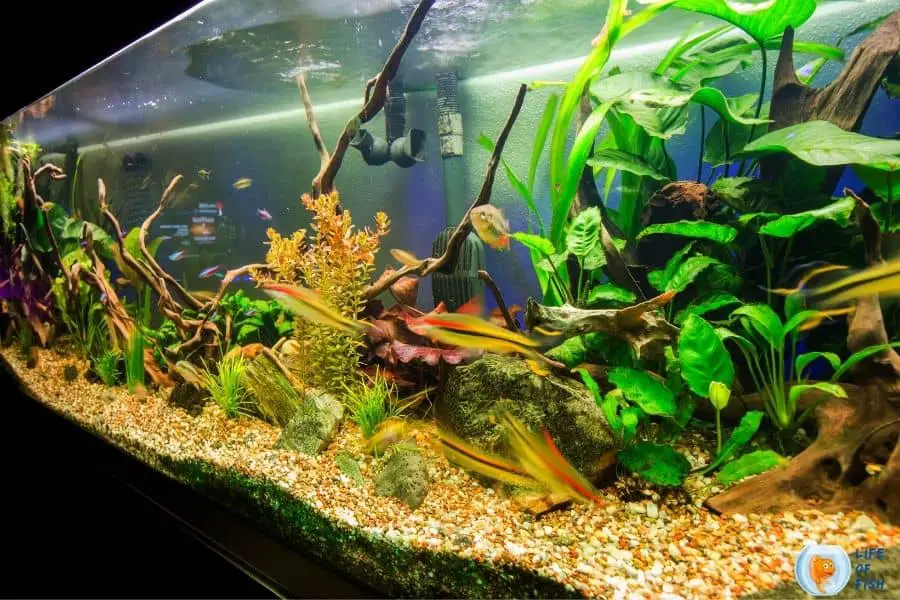
What are the different types of filter media?
There are several varieties of filter media that can be used in filters, and the type you select will be determined by the size of your aquarium and the type of fish you keep.
The most common types of filter media are:
Activated carbon
Activated carbon is a type of carbon that has been treated to make it very porous. This makes it great at absorbing toxins and impurities from the water.
Activated carbon is a good option for people who want to create a high-quality environment for their fish.
However, it can be expensive and may need to be replaced more often than other types of filter media.
Zeolite
Zeolite is a type of mineral that is very effective at absorbing toxins and impurities from the water. A zeolite is a good option for people who want to create a high-quality environment for their fish.
However, it can be expensive and may need to be replaced more often than other types of filter media.
Biological filter media
Biological filter media is a type of material that is designed to support the growth of beneficial bacteria.
These bacteria help to break down waste products in the water, which helps to keep the water quality high and the fish healthy.
Biological filter media is relatively cheaper than other types of filter media and does not need to be replaced as often.
Can a fish tank filter kill fish?
Yes. This often happens when people choose the wrong type of filter for their aquarium or do not maintain their filters properly.
There are three causes why a fish tank filter can kill a fish.
- The filter is too strong for your fish
- The filter is too small for the tank
- Malfunctioned filter
Let’s discuss each cause further and how to prevent it.
The filter is too strong for your fish
Aquarium filters come in different sizes and different flow rates. Although smaller aquariums can run filters with high flow rates, it’s not recommended to do so.
The strong currents created by the filter can stress out the fish and make it difficult for them to swim. The fish can even be pulled into the filter and killed in some cases.
How do I know if my filter is too strong for my fish?
There are several signs that indicate your fish is struggling in the current created by the filter.
- Fish seem to be struggling while swimming
- Difficulty in finding balance
- Fish hiding throughout the day rather than exploring around the tank
- Water current interfering with the feeding patterns of your fish
- Extreme turbulence at the top of the aquarium
- Plants looking bent over (Although this is normal for some plants, it is not for others.)
If you observe these signs in your aquarium, you should take action immediately and reduce the power of your filter.
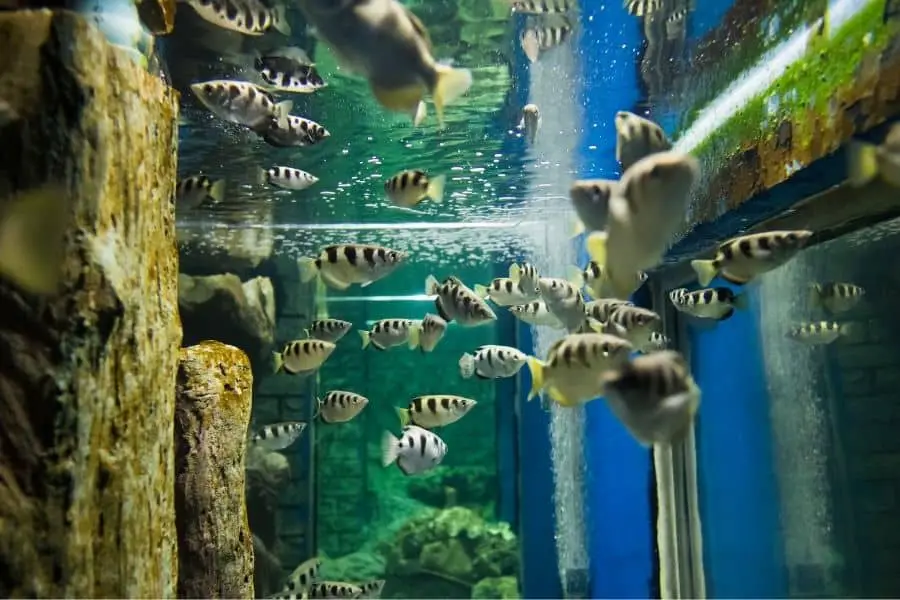
How can I reduce the fish tank filter power and fix this issue?
If your budget allows it, the best option would be to buy a filter that is ideal for your fish tank size.
The power of your filter may also change according to the fish type you have in your aquarium. For example, goldfish require less filtration than bettas.
If that seems to be an expensive option, you can try one or more of the below methods to reduce the power of your fish tank filter.
Reduce the flow rate of your filter
If you have a canister filter, you can reduce the flow rate by turning the knob that controls the flow rate.
If you have a hang-on-back (HOB) filter, you can reduce the flow rate by attaching a sponge to the outflow.
Some filters also come with a setting to control the flow rate. Reduce the flow rate of your filter using one of these methods so that it does not create too much current in your aquarium.
Add rocks, caves, plants, and other decorations to your aquarium
Sometimes, the filter’s flow rate can be reduced by adding more stuff to your aquarium. This method does not always work, but it is worth a try.
By adding these objects to your tank, you can create more areas of low flow and provide a refuge for your fish from the strong currents.
Use a baffle to reduce the flow rate
You can use a baffle to reduce the flow rate of your filter. A baffle is a material that you can place within your aquarium (typically plastic or acrylic piece). It obstructs the flow of water and generates a low-flow zone.
You can make your own baffle by cutting a hole in a plastic container and placing it over the outflow of your filter.
To make sure your fish are not stressed out, try to add a few baffles to your aquarium.
Change the position of your filter
If your filter is placed at the corner of your aquarium, the water flow will be stronger in that area.
Try to position your filter in the middle of your aquarium to distribute the water flow throughout the tank evenly.
By following one of these methods, you can reduce the power of your fish tank filter and create a safer environment for your fish.
The filter is too small for the tank
Sometimes, the filter can be too small for your fish tank. This makes it not powerful enough to clean the water properly.
As a result, the quality of water in your tank may deteriorate, and your fish may develop ill and die.
If you think your filter is too small for your fish tank, the best option would be to buy a new filter appropriate for your tank’s size. This will ensure that your fish have a clean and safe environment to live in.
Some common signs that your fish tank filter is not strong enough are:
- The water in your tank is not crystal clear
- There is a build-up of algae on the glass of your aquarium
- The water in your tank has a bad odor
- There is a build-up of debris in your aquarium
- Fish are gulping at the surface of the water
- Your fish are swimming erratically
- Fish are constantly getting sick or dying
If you notice any of these signs, it is important to take action immediately and get a new filter for your fish tank.
Can you use two filters in a fish tank?
Yes. You can actually use two filters in a fish tank. This method is known as redundant filtration.
The idea behind this method is to have a backup filter in case one filter fails. This way, your fish will still have a clean and safe environment to live in.
To set up redundant filtration two, you will need filters that are the same size and type. For example, you can use two canister filters or two HOB filters.
You will also need to have a way to connect the two filters together. You can do this by using a hose or tubing.
Once you have everything set up, you will need to prime the filters. You can do this by following the guidelines that come with your filter. After the filters are primed, you can turn them on and let them run for a few hours.
If you notice that one of the filters is not working properly, you can turn it off and let the other filter do all the work.
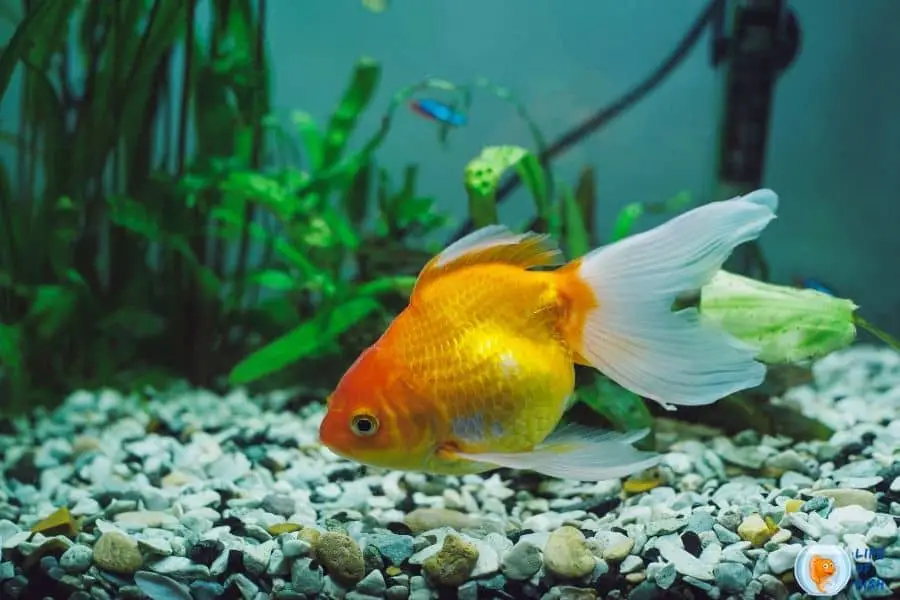
Things to consider while using redundant filtration
While redundant filtration can be a good idea, it still has its own set of problems.
For example, if one filter breaks down, you will still need to buy a new filter. Additionally, redundant filtration can be expensive since you will need to buy two filters instead of one.
Redundant filtration may not suit fish that require a low flow rate, as having two filters can increase the flow rate.
If you are not sure whether redundant filtration is right for your fish tank, it is best to consult with a fish expert.
When can you use redundant filtration?
When you have a filter that is not strong enough for your fish tank, you can use redundant filtration to make up for the lack of power.
Additionally, if you have a fish tank prone to power outages, redundant filtration can help keep your fish safe.
Plants as natural filters
If you feel that your fish tank filter is not strong enough, you can try adding some aquatic plants to your tank.
Aquatic plants help filter the water in your tank and provide oxygen for your fish.
Some of the best aquatic plants for filtration include hornwort, water sprite, and Anacharis. You can buy these plants at your local fish store or online.
When adding plants to your fish tank, you will need to ensure that they are getting the proper amount of light and nutrients.
You can do this by adding a plant light to your tank and using a fertilizer that is designed for aquatic plants.
Malfunctioned filter
Most aquarists keep properly fitted filters in their aquarium, hoping they will do the job. But, sometimes filters break down but seem to be working just fine, while it doesn’t.
How do you know if your fish tank filter is broken?
Some common signs that your filter might have stopped working are:
- Your tank’s water isn’t as clear as it used to be.
- There’s an alga bloom on your aquarium’s glass.
- The water in your tank has an unpleasant odor.
- More debris has gathered in your aquarium.
- Your fish are gulping air at the surface of the water
- Fish are swimming erratically
- Your fish are constantly becoming ill or dying.
If you’re not sure whether your filter is 100% functional, it’s better to check it with a new one. By doing this, you can be sure your fish are safe and sound and your aquarium is being properly filtered.
Solutions for a malfunctioned filter
If you think your filter isn’t working as it should, there are a few things you can do:
Clean the filter
The first step should be to clean the filter. Over time, filters can become clogged with debris, which can reduce their efficiency. To clean your filter, follow the instructions in your filter’s manual.
If your filter is still not working after you’ve cleaned it, you may need to replace it.
Check the filter media
Another thing you can do is check the filter media. Filter media is what actually does the work of filtering your water. If the media is old or damaged, it may need to be replaced.
To check the condition of your filter media, take it out of the filter and inspect it. If it’s old or damaged, it’s best to replace it.
Check the pump
If your filter has a pump, make sure it’s working properly. You can remove the pump from the filter and plug it into an outlet to do this. If the pump doesn’t turn on, it may need to be replaced.
Inspect the hoses and connections
If your filter has hoses or connections, ensure they’re all tight and secure. If any of them are loose, they could cause your filter to leak or not work properly.
Troubleshoot the problem
If you’re still not sure what’s causing your filter not to work properly, you can try troubleshooting the problem. There are several things you can do:
Check the manufacturer’s website
If you’re having trouble with your filter, you should first check the manufacturer’s website. Many companies have troubleshooting guides or customer support that can help you figure out what’s wrong with your filter.
Search online
If you can’t find anything on the manufacturer’s website, you can try searching for your problem online. There are numerous online forums and communities where you may seek advice from other aquarists.
Consult an expert
If you’re still having trouble, you can consult an expert. Aquarium stores and pet stores usually have staff members who are knowledgeable about filters and can help you troubleshoot your problem.
When to call a professional
If you’ve tried everything above and your filter is still not operating properly, it’s time to call a professional. Aquarium repair companies specialize in fixing filters, and they can usually get your filter up and running in no time.
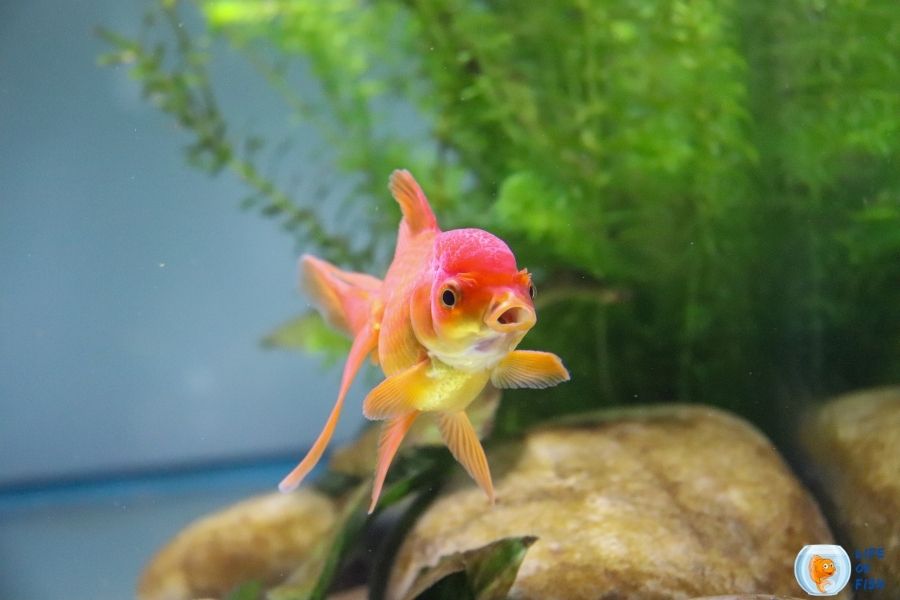
How to stop fish from swimming into the filter?
Some filters are powerful enough to suck fish into them and kill them when they swim into the filter. You can avoid this from occurring by doing the following:
Install a pre-filter
A pre-filter is a simple device that goes over your filter’s intake. It helps to keep fish and other small animals from being sucked into the filter. Usually, this is a cylinder-like sponge that fits snugly over the intake.
Install a fish guard
A fish guard is a piece of mesh or screen that goes over the filter’s intake. It helps to keep fish from being sucked into the filter.
Install a valve
A valve is a device that goes between your filter and your aquarium. It helps regulate the flow of water and prevents fish from being sucked into the filter.
Use a slower setting
If your filter has multiple settings, use the lowest setting that still does a good job of filtering your water. This will help to prevent fish from being sucked into the filter.
Related Questions
Can you have too much filtration?
If it is only for cleaning the water in your tank, too much filtration will not harm anything. If your aquarium has fish and other aquatic animals, too much filtration can harm them. Further, too powerful filters can also damage the fish tank by producing powerful currents.
How often should I clean my filter?
It depends on the type of fish tank filter you have and the size of your aquarium. For most filters, it’s a good idea to clean them every month or two.
Why is my fish sticking to the filter?
If it is a large fish, it might be because it doesn’t have enough oxygen, and it is trying to get closer to the oxygen-rich water that is flowing out of the filter. If it is a small fish, it might be because the filter is too strong and the fish is being sucked into it.
So, if you see your fish sticking to the filter, you should check the water quality and make sure the filter isn’t too strong.
Can a filter kill a betta fish?
Betta fish are very sensitive to water quality and can be easily killed by a poorly working filter. If you have betta fish, you should closely monitor the water quality and make sure the filter is working properly.
Additionally, if the filter is too strong, it can create powerful currents that can harm or even kill a betta fish. It can also suck the fish into the filter and kill it. So, if you have a betta fish, you should make sure the filter is not too strong.
Can a dirty filter kill fish?
It is usual for a filter to get dirty when it is first used because it takes time for the beneficial bacteria to grow.
However, if a filter is not cleaned on a regular basis, the build-up of dirt and debris can clog the filter and prevent it from working properly. This can lead to poor water quality and can kill fish.
Conclusion
A fish tank filter can kill your fish if not installed in the appropriate size or if not properly maintained.
Installing the correct size filter and maintaining your filter is key to keeping your fish alive and healthy.
Make sure you understand how to clean and care for your filter so it can perform its job and maintain your tank healthy.
Read Next : 13 Types of Aquarium Snails | The Good and The Bad |
